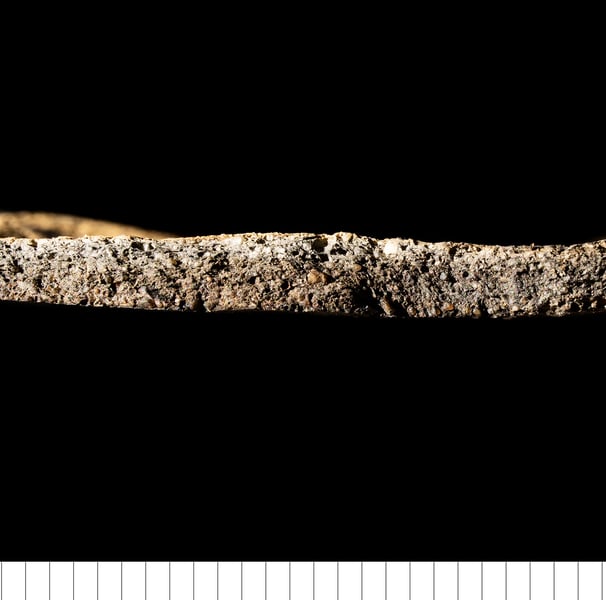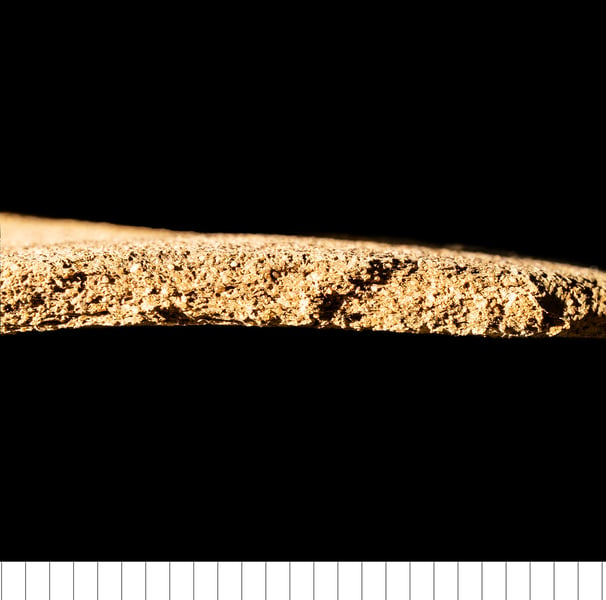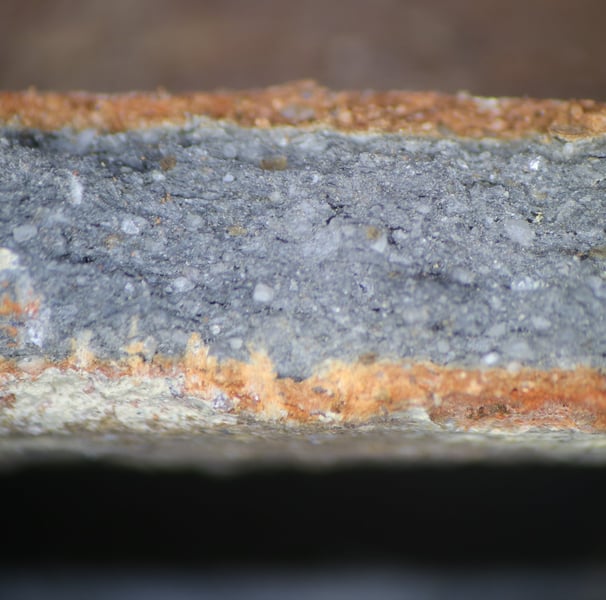EMW - Early medieval ware
Fine/medium sandy thin-walled handmade wares, as typical in Norfolk (Jennings 1981) and north Suffolk. Coarser quartz present in some, but generally not visible on surface. Occasional calcareous, ferrous, organic and flint/chert inclusions may also be present.
TS sample description (Patrick Quinn): Medium and coarse well-rounded sand-sized inclusions of quartz, and less common polycrystalline quartz and iron-stained or clear chert, plus rare amphibole. Less common silt-sized inclusions, dominated by angular quartz and muscovite mica, with rare amphibole and plagioclase. Rare sand and silt-sized ferruginous inclusions. The sand-sized inclusions may be temper. Non-vitrified and moderately oxidised non-calcareous clay matrix. Frequent macro and meso-elongate drying voids parallel to sherd margins.
Example from Wortham.




WVEMW - Early medieval ware Waveney Valley type
Handmade version of WVSW, fine-medium sandy (variable sand colours, clear, white, brown, pink), some red clay pellets, rare mica.
TS sample description (Patrick Quinn): Well-sorted, sub-angular to sub-rounded fine and medium sand-sized inclusions of quartz and polycrystalline quartz with less common chert, microcline, ferruginous inclusions and fine quartz-rich sandstone. Less common silt-sized inclusions, dominated by angular quartz, muscovite mica and rounded opaques. The sand-sized inclusions may be temper. Non-vitrified, well oxidised non-calcareous clay matrix, with occasional iron-rich clay pellets and streaking. Frequent macro and meso-elongate drying voids parallel to sherd margins. Finer, better sorted fabric than EMW (Sample 5).
Example from Worlingham.


EMW - Early medieval ware
Microscope sample. Fine sandy (mainly clear and white), fine ferrous oxide.
Example from Eye.
Copyright
This website, and the type series, was created by Dr Sue Anderson, Spoilheap Archaeology: www.spoilheap.co.uk
I am available for contract work on pottery from East Anglia and beyond. Email sue@spoilheap.co.uk
© 2024. All rights reserved.
To visit the type series at Suffolk County Council Archaeological Service, Bury St Edmunds, contact Faye Minter: Faye.Minter@suffolk.gov.uk
Tel: 01284 741 228 to make an appointment.